LEXUS LS430 2003 Factory Repair Manual
Manufacturer: LEXUS, Model Year: 2003, Model line: LS430, Model: LEXUS LS430 2003Pages: 4500, PDF Size: 87.45 MB
Page 1601 of 4500
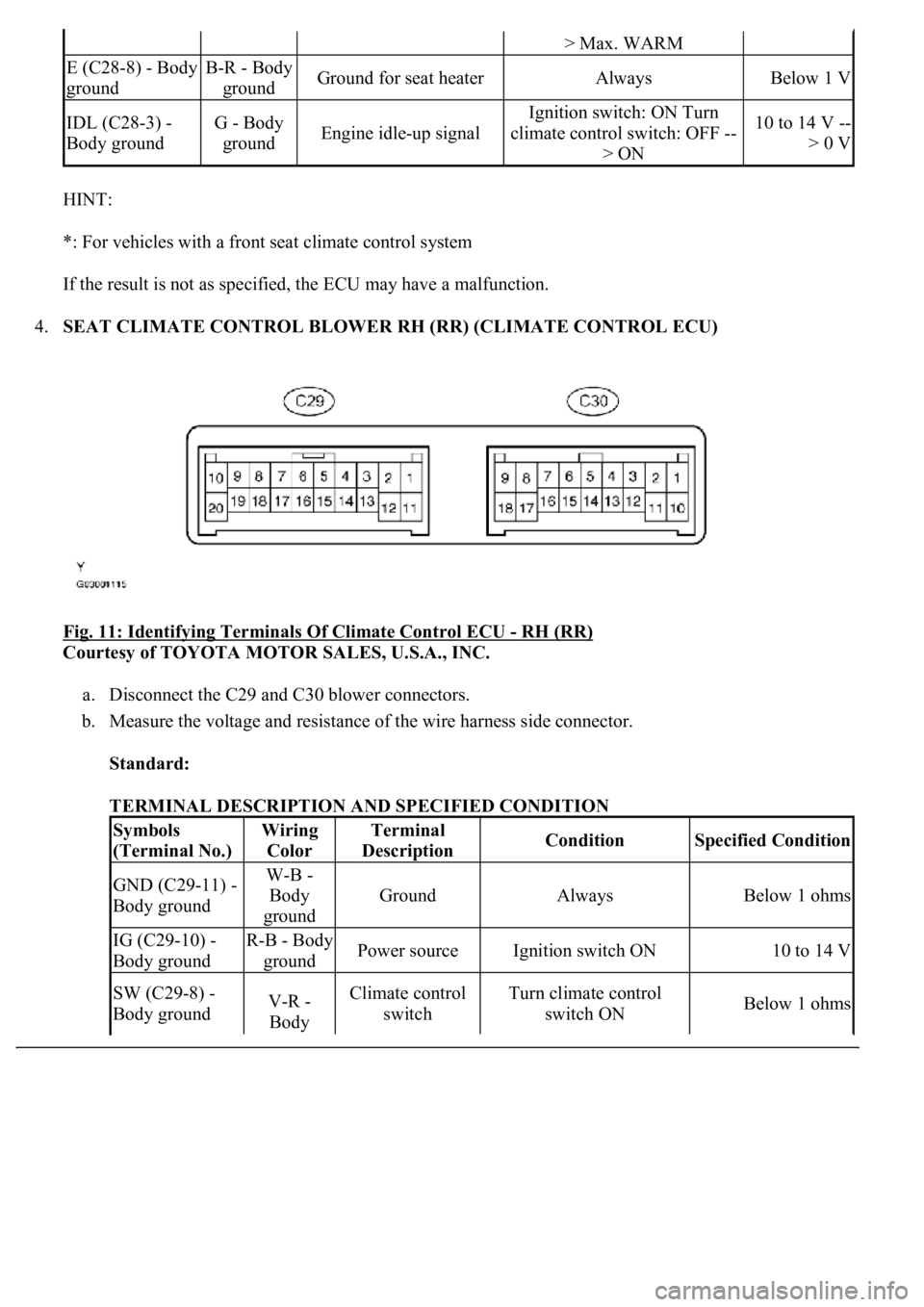
HINT:
*: For vehicles with a front seat climate control system
If the result is not as specified, the ECU may have a malfunction.
4.SEAT CLIMATE CONTROL BLOWER RH (RR) (CLIMATE CONTROL ECU)
Fig. 11: Identifying Terminals Of Climate Control ECU
- RH (RR)
Courtesy of TOYOTA MOTOR SALES, U.S.A., INC.
a. Disconnect the C29 and C30 blower connectors.
b. Measure the voltage and resistance of the wire harness side connector.
Standard:
TERMINAL DESCRIPTION AND SPECIFIED CONDITION
> Max. WARM
E (C28-8) - Body
groundB-R - Body
groundGround for seat heaterAlwaysBelow 1 V
IDL (C28-3) -
Body groundG - Body
groundEngine idle-up signal
Ignition switch: ON Turn
climate control switch: OFF --
> ON10 to 14 V --
> 0 V
Symbols
(Terminal No.)Wiring
ColorTerminal
DescriptionConditionSpecified Condition
GND (C29-11) -
Body groundW-B -
Body
ground
GroundAlwaysBelow 1 ohms
IG (C29-10) -
Body groundR-B - Body
groundPower sourceIgnition switch ON10 to 14 V
SW (C29-8) -
Body groundV-R -
Body Climate control
switchTurn climate control
switch ONBelow 1 ohms
Page 1602 of 4500
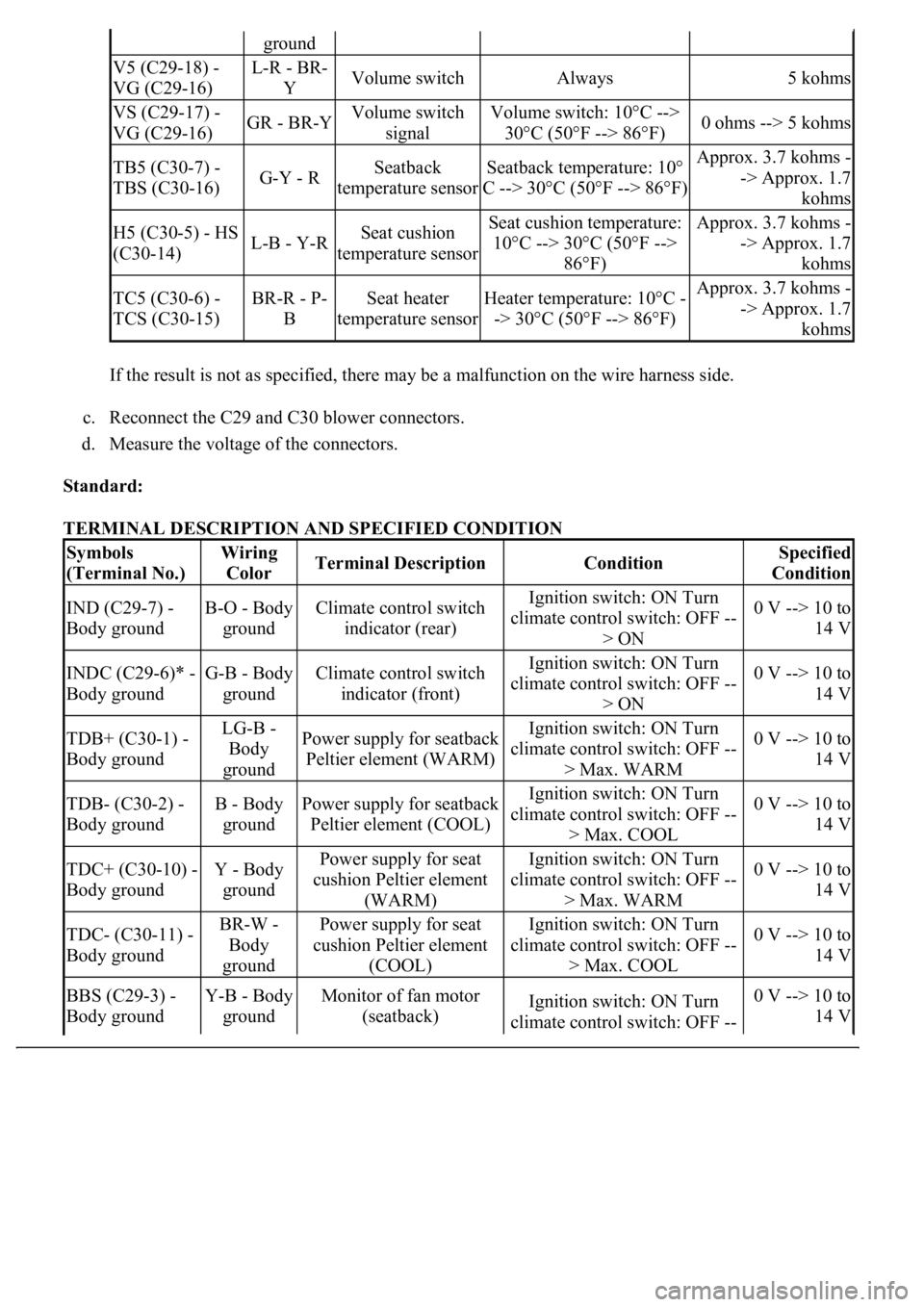
If the result is not as specified, there may be a malfunction on the wire harness side.
c. Reconnect the C29 and C30 blower connectors.
d. Measure the voltage of the connectors.
Standard:
TERMINAL DESCRIPTION AND SPECIFIED CONDITION
ground
V5 (C29-18) -
VG (C29-16)L-R - BR-
YVolume switchAlways5 kohms
VS (C29-17) -
VG (C29-16)GR - BR-YVolume switch
signalVolume switch: 10°C -->
30°C (50°F --> 86°F)0 ohms --> 5 kohms
TB5 (C30-7) -
TBS (C30-16)G-Y - RSeatback
temperature sensorSeatback temperature: 10°
C --> 30°C (50°F --> 86°F)Approx. 3.7 kohms -
-> Approx. 1.7
kohms
H5 (C30-5) - HS
(C30-14)L-B - Y-RSeat cushion
temperature sensorSeat cushion temperature:
10°C --> 30°C (50°F -->
86°F)Approx. 3.7 kohms -
-> Approx. 1.7
kohms
TC5 (C30-6) -
TCS (C30-15)BR-R - P-
BSeat heater
temperature sensorHeater temperature: 10°C -
-> 30°C (50°F --> 86°F)Approx. 3.7 kohms -
-> Approx. 1.7
kohms
Symbols
(Terminal No.)Wiring
ColorTerminal DescriptionConditionSpecified
Condition
IND (C29-7) -
Body groundB-O - Body
groundClimate control switch
indicator (rear)Ignition switch: ON Turn
climate control switch: OFF --
> ON0 V --> 10 to
14 V
INDC (C29-6)* -
Body groundG-B - Body
groundClimate control switch
indicator (front)Ignition switch: ON Turn
climate control switch: OFF --
> ON0 V --> 10 to
14 V
TDB+ (C30-1) -
Body groundLG-B -
Body
groundPower supply for seatback
Peltier element (WARM)Ignition switch: ON Turn
climate control switch: OFF --
> Max. WARM0 V --> 10 to
14 V
TDB- (C30-2) -
Body groundB - Body
groundPower supply for seatback
Peltier element (COOL)Ignition switch: ON Turn
climate control switch: OFF --
> Max. COOL0 V --> 10 to
14 V
TDC+ (C30-10) -
Body groundY - Body
groundPower supply for seat
cushion Peltier element
(WARM)Ignition switch: ON Turn
climate control switch: OFF --
> Max. WARM0 V --> 10 to
14 V
TDC- (C30-11) -
Body groundBR-W -
Body
groundPower supply for seat
cushion Peltier element
(COOL)Ignition switch: ON Turn
climate control switch: OFF --
> Max. COOL0 V --> 10 to
14 V
BBS (C29-3) -
Body groundY-B - Body
groundMonitor of fan motor
(seatback)Ignition switch: ON Turn
climate control switch: OFF --0 V --> 10 to
14 V
Page 1603 of 4500
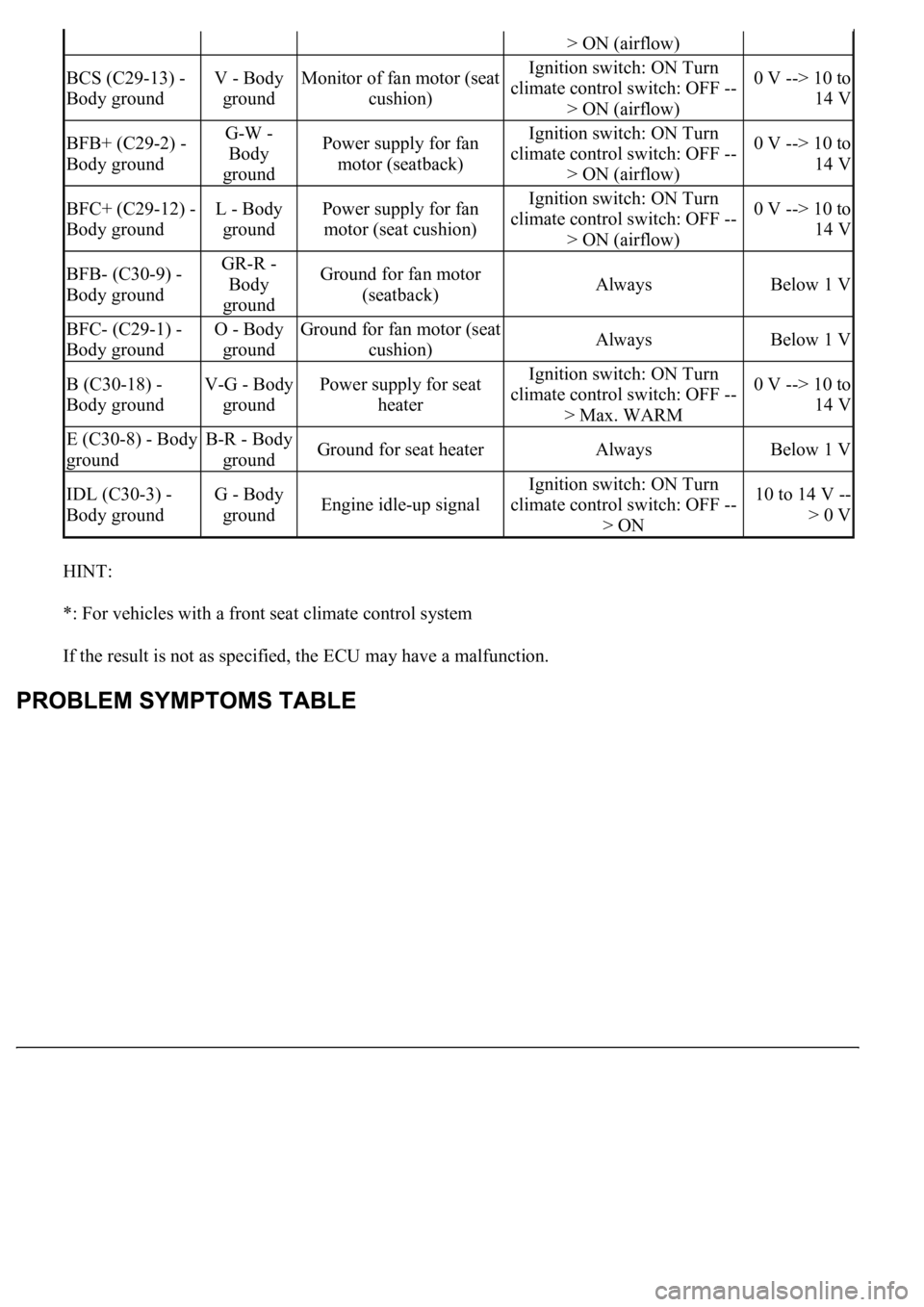
HINT:
*: For vehicles with a front seat climate control system
If the result is not as specified, the ECU may have a malfunction.
> ON (airflow)
BCS (C29-13) -
Body groundV - Body
groundMonitor of fan motor (seat
cushion)Ignition switch: ON Turn
climate control switch: OFF --
> ON (airflow)0 V --> 10 to
14 V
BFB+ (C29-2) -
Body groundG-W -
Body
groundPower supply for fan
motor (seatback)Ignition switch: ON Turn
climate control switch: OFF --
> ON (airflow)0 V --> 10 to
14 V
BFC+ (C29-12) -
Body groundL - Body
groundPower supply for fan
motor (seat cushion)Ignition switch: ON Turn
climate control switch: OFF --
> ON (airflow)0 V --> 10 to
14 V
BFB- (C30-9) -
Body groundGR-R -
Body
groundGround for fan motor
(seatback)AlwaysBelow 1 V
BFC- (C29-1) -
Body groundO - Body
groundGround for fan motor (seat
cushion)AlwaysBelow 1 V
B (C30-18) -
Body groundV-G - Body
groundPower supply for seat
heaterIgnition switch: ON Turn
climate control switch: OFF --
> Max. WARM0 V --> 10 to
14 V
E (C30-8) - Body
groundB-R - Body
groundGround for seat heaterAlwaysBelow 1 V
IDL (C30-3) -
Body groundG - Body
groundEngine idle-up signal
Ignition switch: ON Turn
climate control switch: OFF --
> ON10 to 14 V --
> 0 V
Page 1604 of 4500
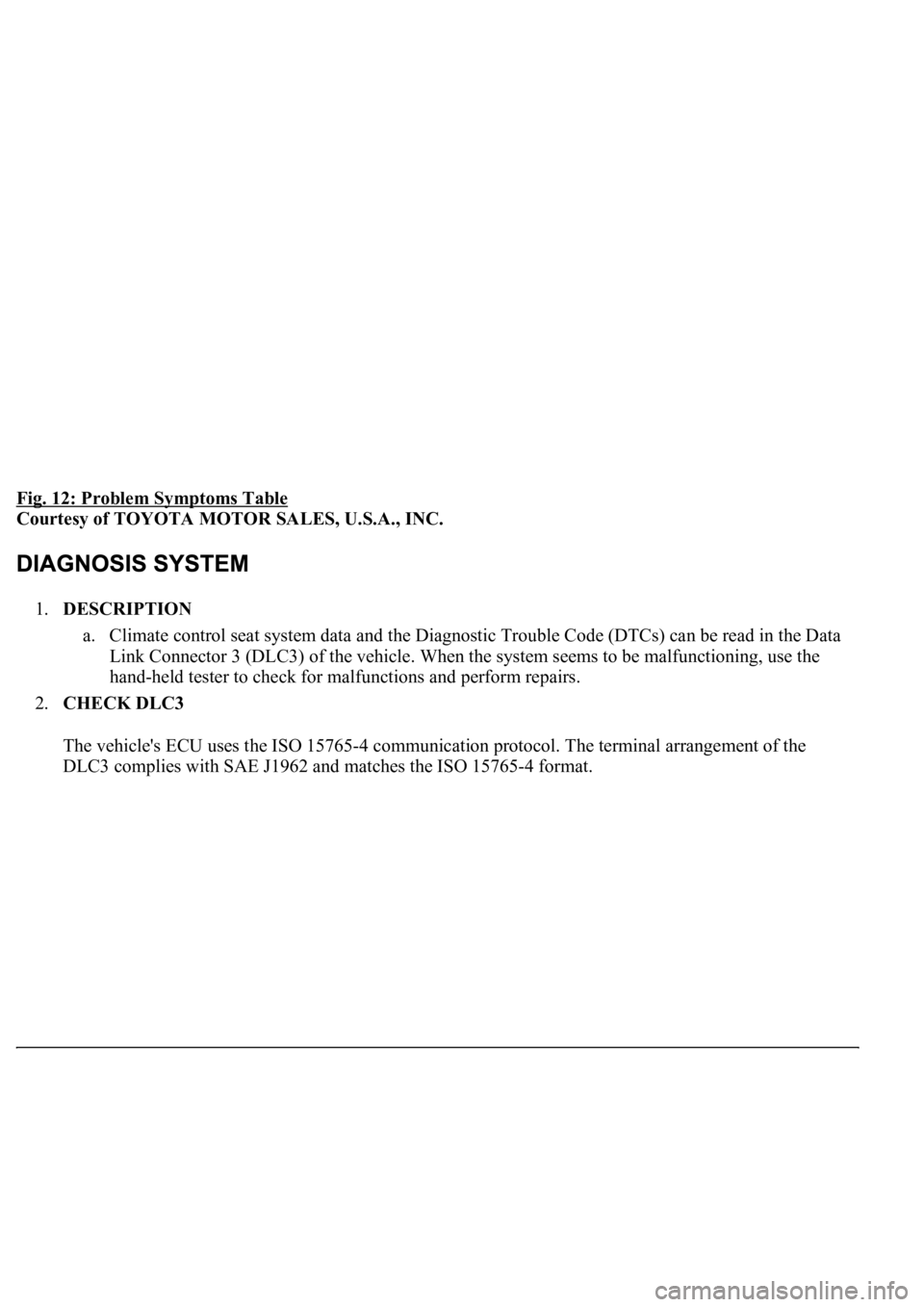
Fig. 12: Problem Symptoms Table
Courtesy of TOYOTA MOTOR SALES, U.S.A., INC.
1.DESCRIPTION
a. Climate control seat system data and the Diagnostic Trouble Code (DTCs) can be read in the Data
Link Connector 3 (DLC3) of the vehicle. When the system seems to be malfunctioning, use the
hand-held tester to check for malfunctions and perform repairs.
2.CHECK DLC3
The vehicle's ECU uses the ISO 15765-4 communication protocol. The terminal arrangement of the
DLC3 complies with SAE J1962 and matches the ISO 15765-4 format.
Page 1605 of 4500
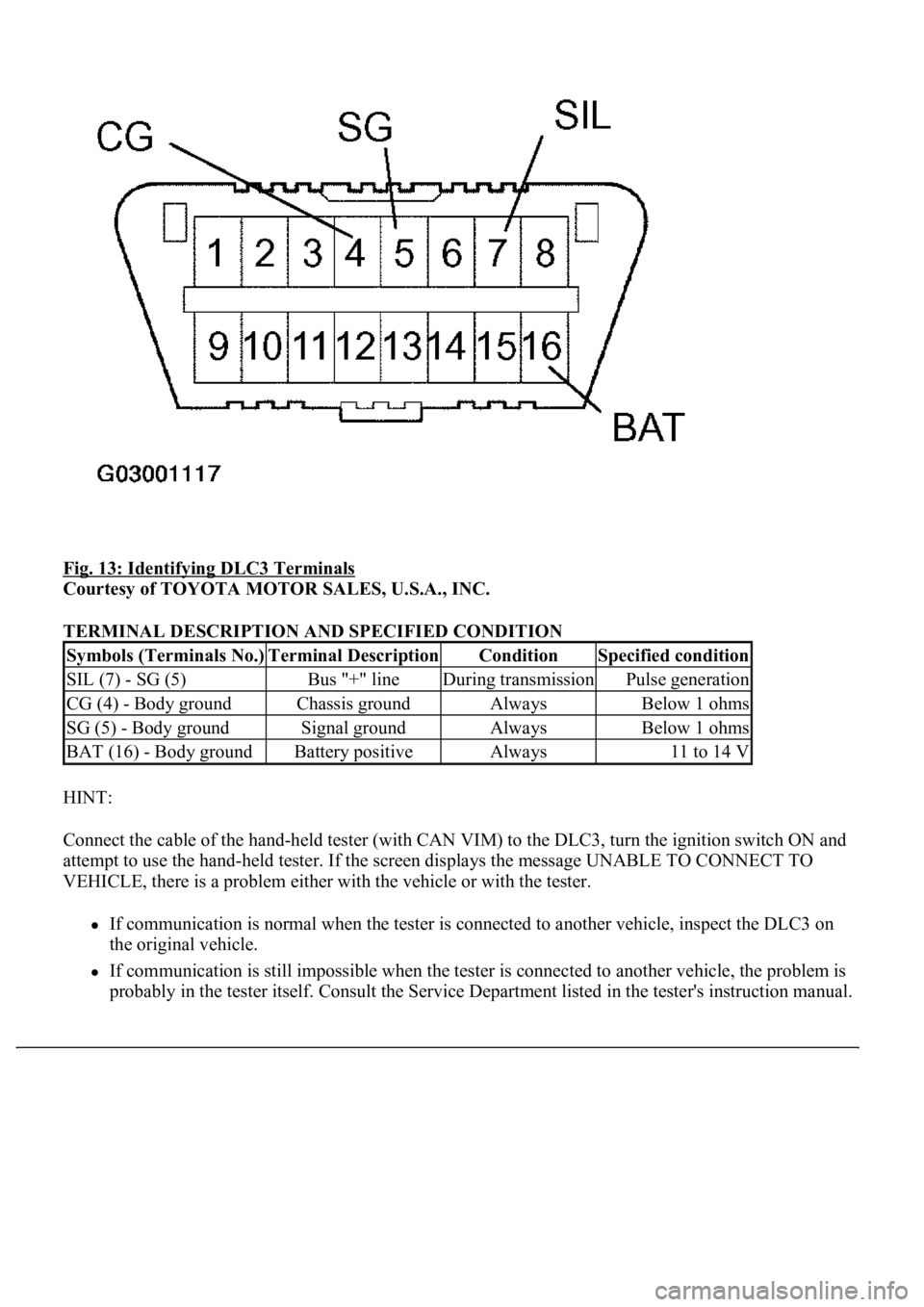
Fig. 13: Identifying DLC3 Terminals
Courtesy of TOYOTA MOTOR SALES, U.S.A., INC.
TERMINAL DESCRIPTION AND SPECIFIED CONDITION
HINT:
Connect the cable of the hand-held tester (with CAN VIM) to the DLC3, turn the ignition switch ON and
attempt to use the hand-held tester. If the screen displays the message UNABLE TO CONNECT TO
VEHICLE, there is a problem either with the vehicle or with the tester.
If communication is normal when the tester is connected to another vehicle, inspect the DLC3 on
the original vehicle.
If communication is still impossible when the tester is connected to another vehicle, the problem is
probably in the tester itself. Consult the Service Department listed in the tester's instruction manual.
Symbols (Terminals No.)Terminal DescriptionConditionSpecified condition
SIL (7) - SG (5)Bus "+" lineDuring transmissionPulse generation
CG (4) - Body groundChassis groundAlwaysBelow 1 ohms
SG (5) - Body groundSignal groundAlwaysBelow 1 ohms
BAT (16) - Body groundBattery positiveAlways11 to 14 V
Page 1606 of 4500
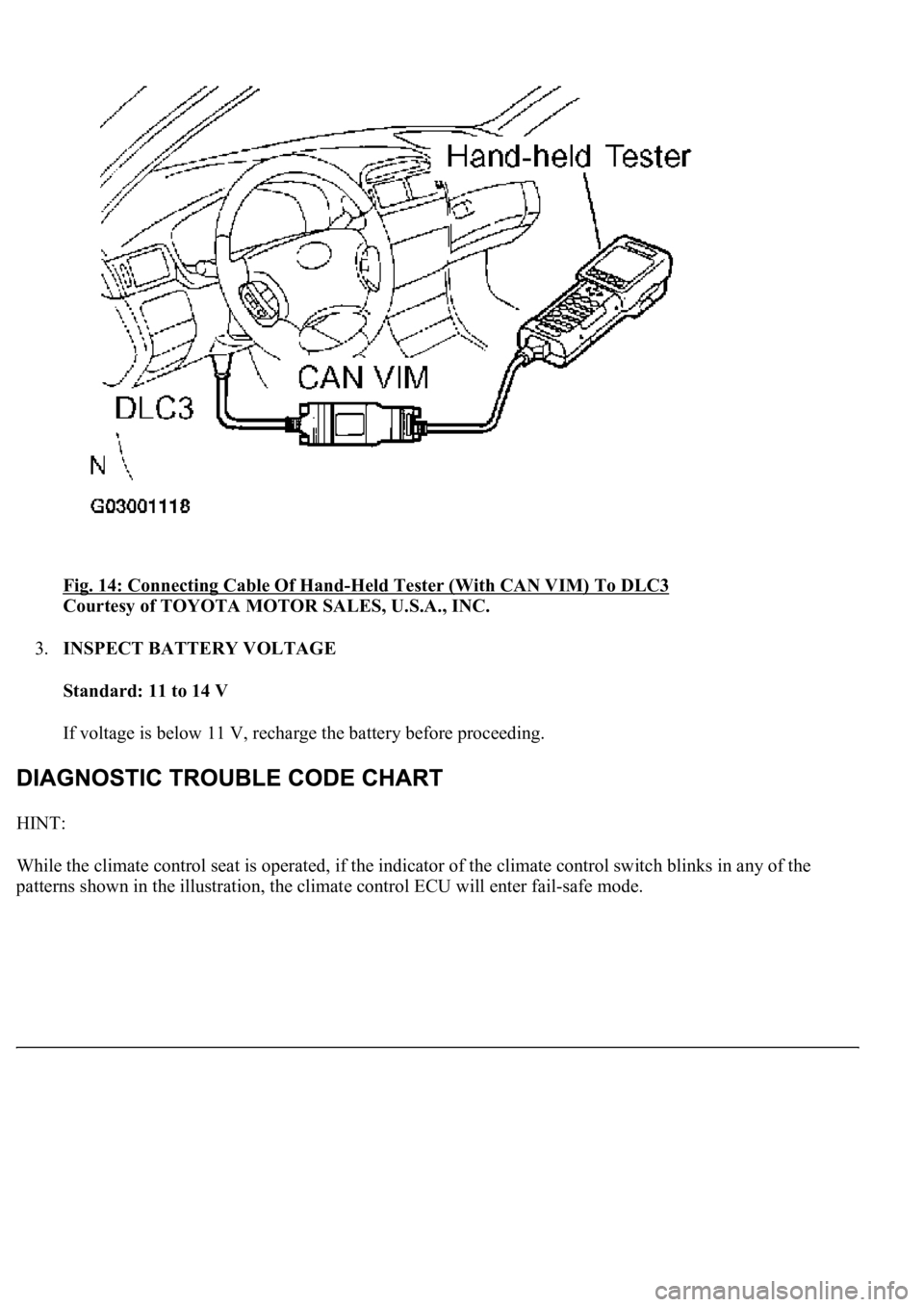
Fig. 14: Connecting Cable Of Hand-Held Tester (With CAN VIM) To DLC3
Courtesy of TOYOTA MOTOR SALES, U.S.A., INC.
3.INSPECT BATTERY VOLTAGE
Standard: 11 to 14 V
If voltage is below 11 V, recharge the battery before proceeding.
HINT:
While the climate control seat is operated, if the indicator of the climate control switch blinks in any of the
patterns shown in the illustration, the climate control ECU will enter fail-safe mode.
Page 1607 of 4500
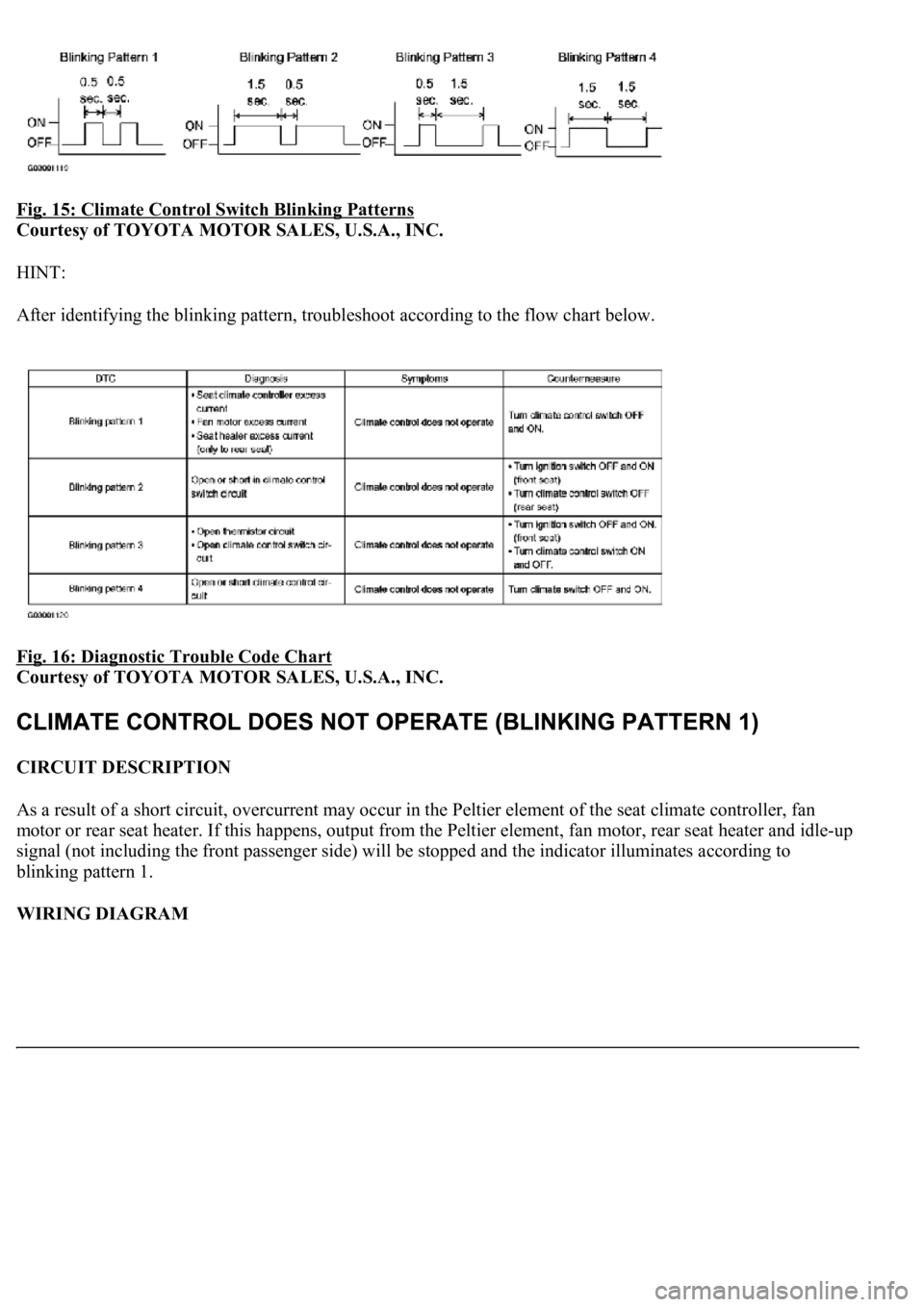
Fig. 15: Climate Control Switch Blinking Patterns
Courtesy of TOYOTA MOTOR SALES, U.S.A., INC.
HINT:
After identifying the blinking pattern, troubleshoot according to the flow chart below.
Fig. 16: Diagnostic Trouble Code Chart
Courtesy of TOYOTA MOTOR SALES, U.S.A., INC.
CIRCUIT DESCRIPTION
As a result of a short circuit, overcurrent may occur in the Peltier element of the seat climate controller, fan
motor or rear seat heater. If this happens, output from the Peltier element, fan motor, rear seat heater and idle-up
signal (not including the front passenger side) will be stopped and the indicator illuminates according to
blinking pattern 1.
WIRING DIAGRAM
Page 1608 of 4500
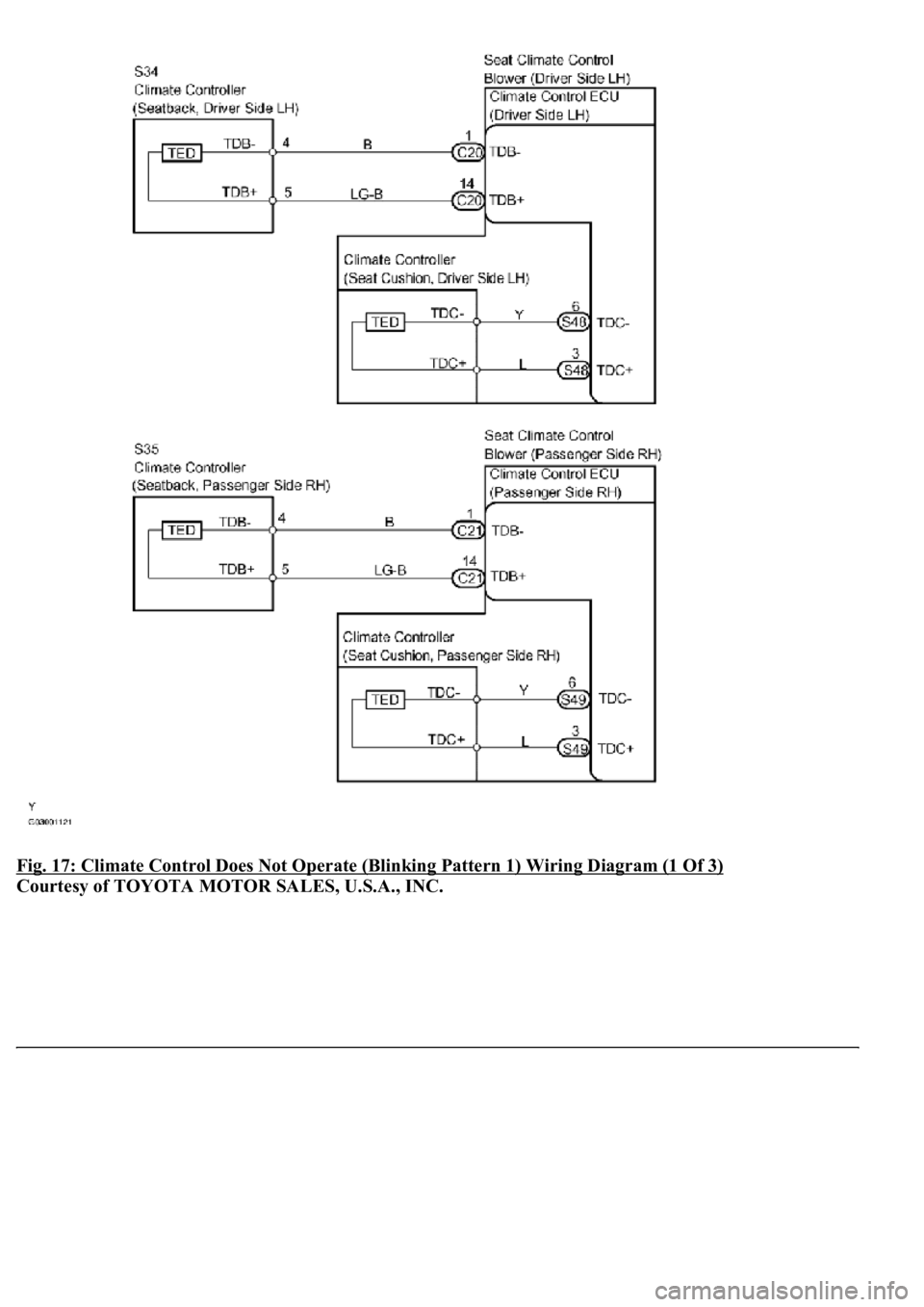
Fig. 17: Climate Control Does Not Operate (Blinking Pattern 1) Wiring Diagram (1 Of 3)
Courtesy of TOYOTA MOTOR SALES, U.S.A., INC.
Page 1609 of 4500
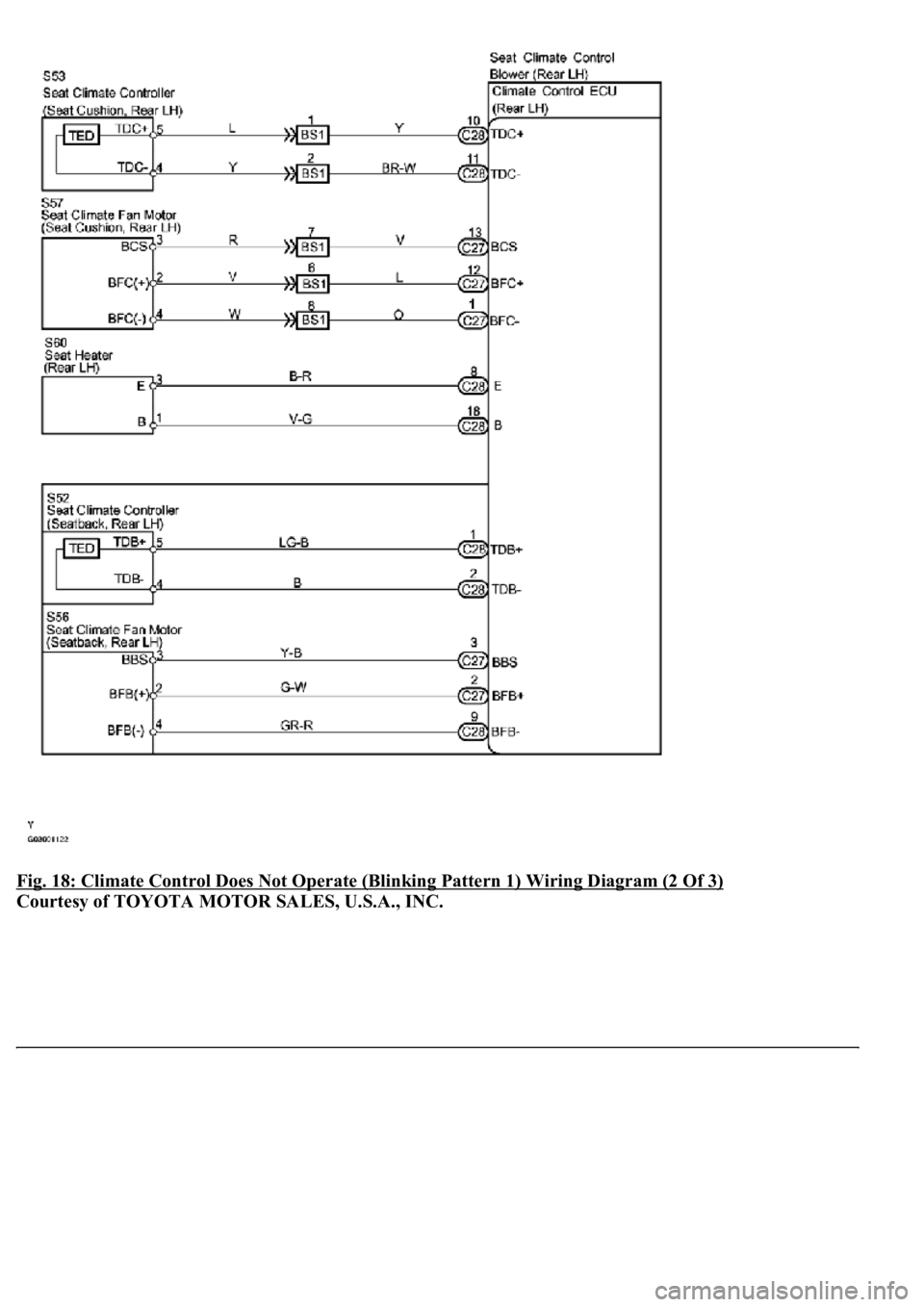
Fig. 18: Climate Control Does Not Operate (Blinking Pattern 1) Wiring Diagram (2 Of 3)
Courtesy of TOYOTA MOTOR SALES, U.S.A., INC.
Page 1610 of 4500
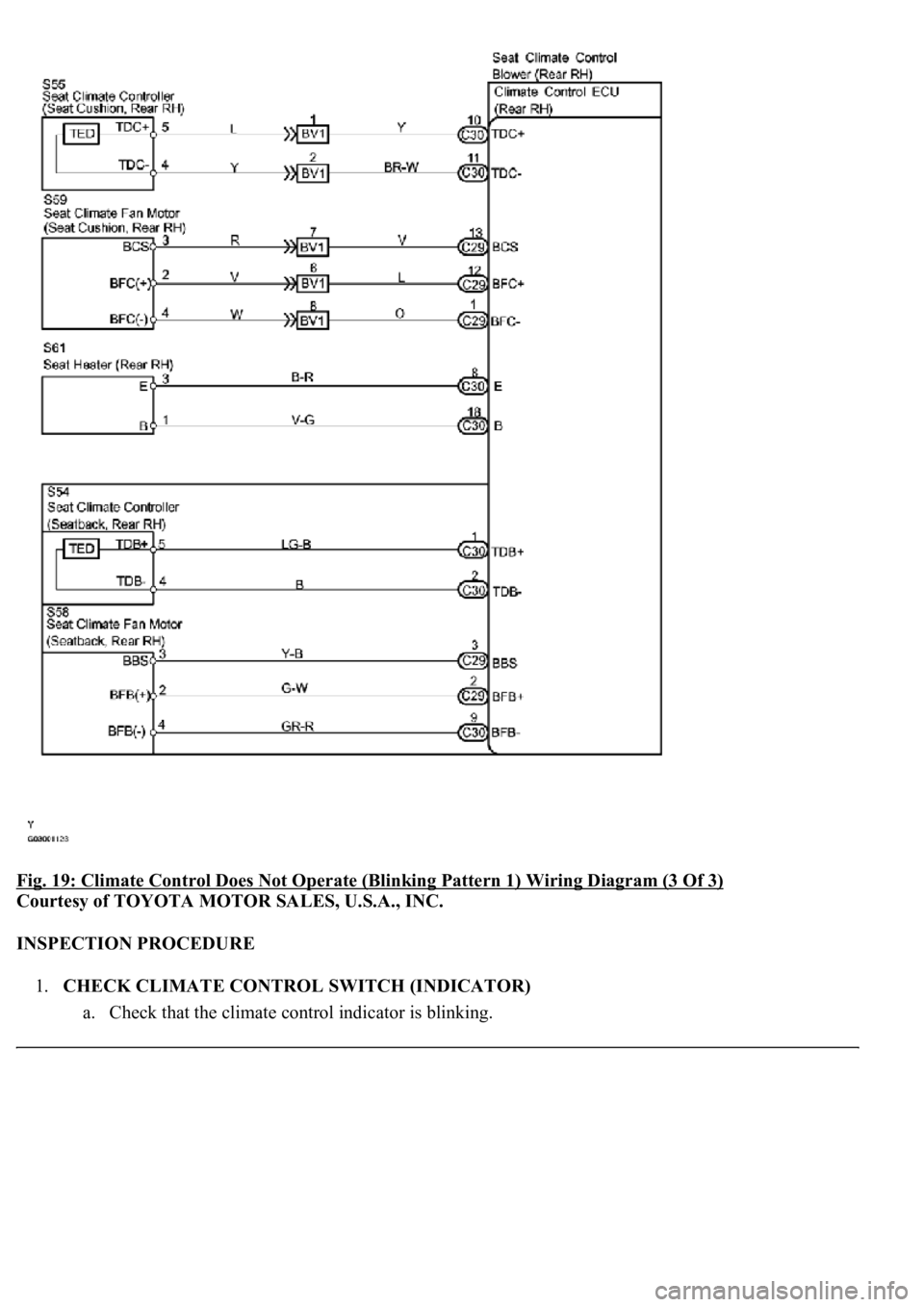
Fig. 19: Climate Control Does Not Operate (Blinking Pattern 1) Wiring Diagram (3 Of 3)
Courtesy of TOYOTA MOTOR SALES, U.S.A., INC.
INSPECTION PROCEDURE
1.CHECK CLIMATE CONTROL SWITCH (INDICATOR)
a. Check that the climate control indicator is blinkin
g.